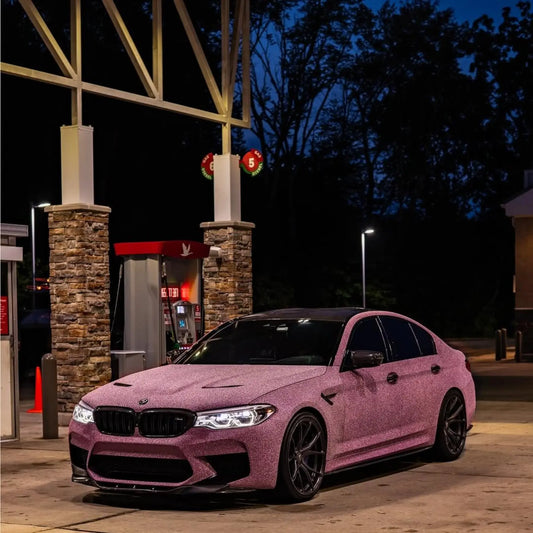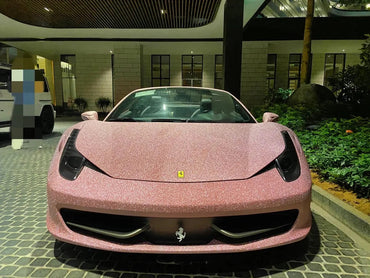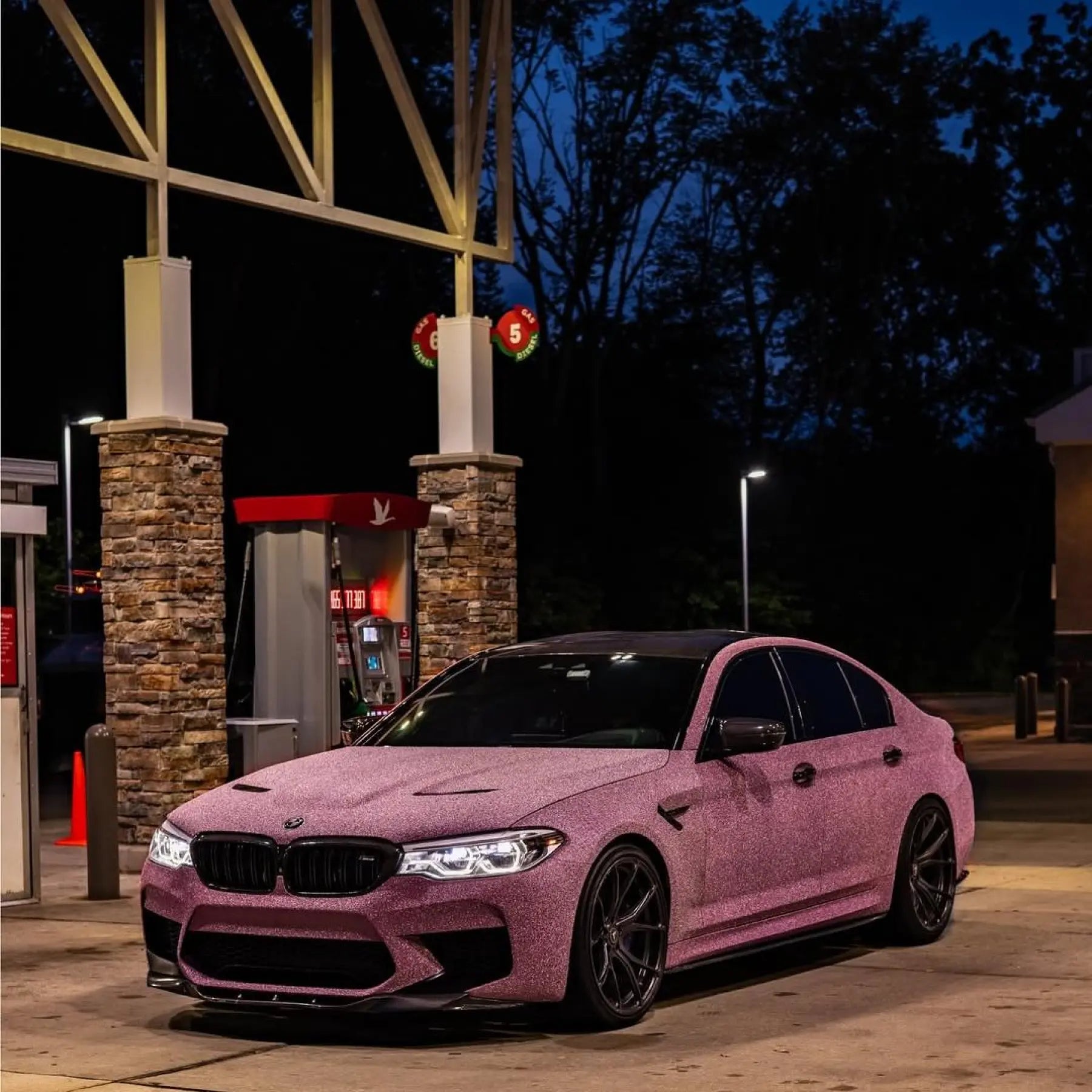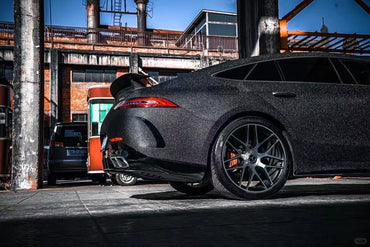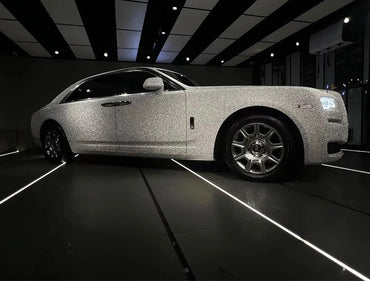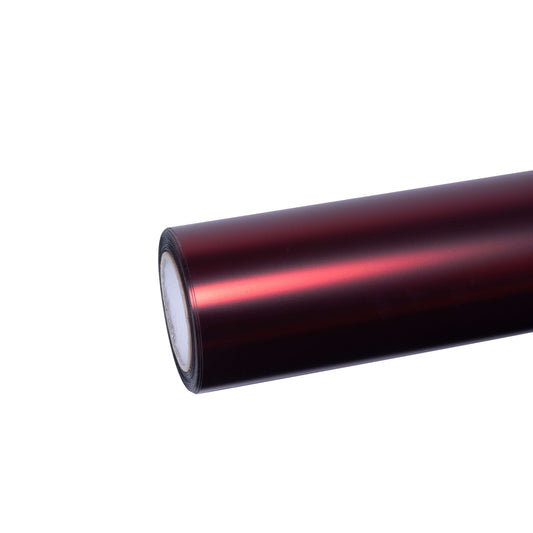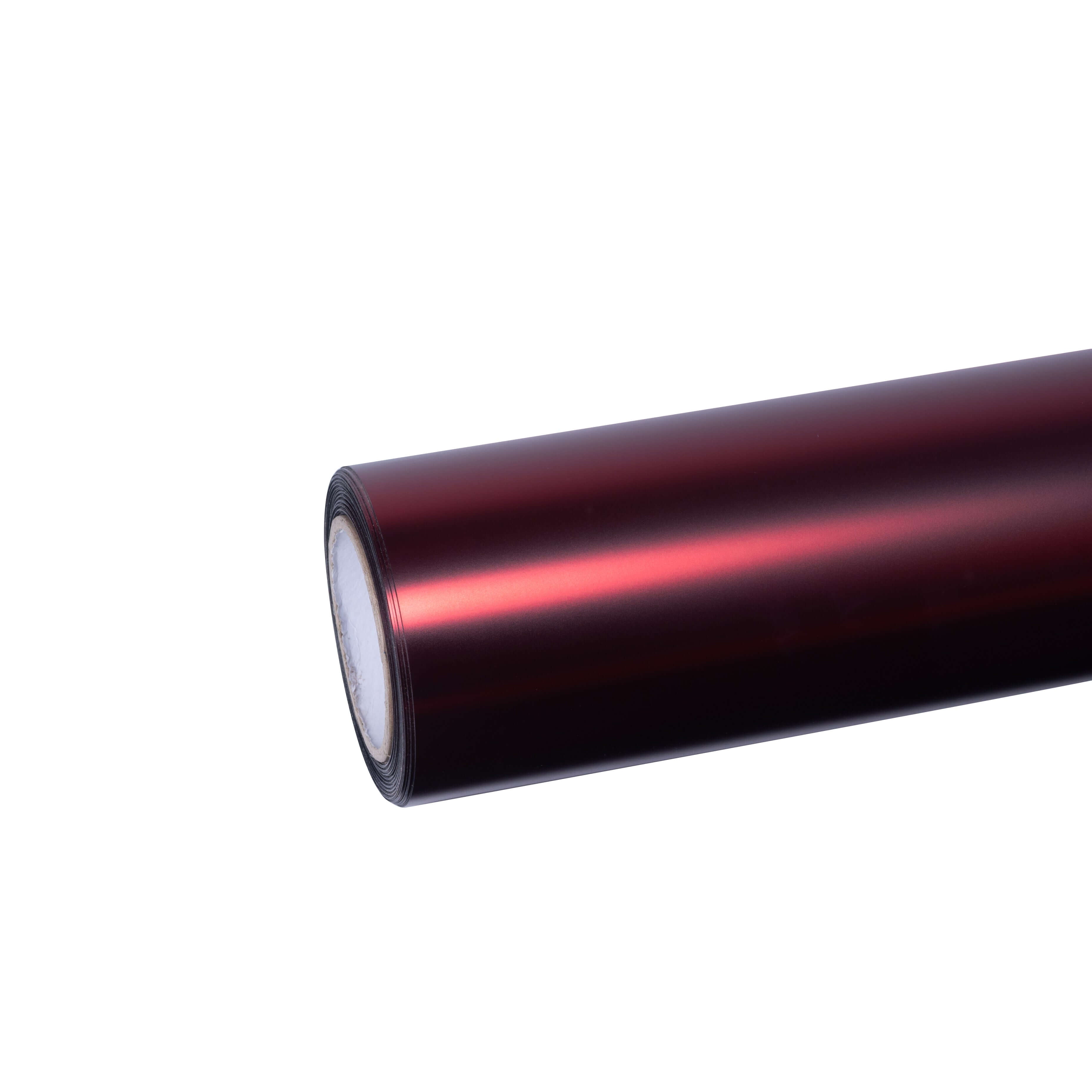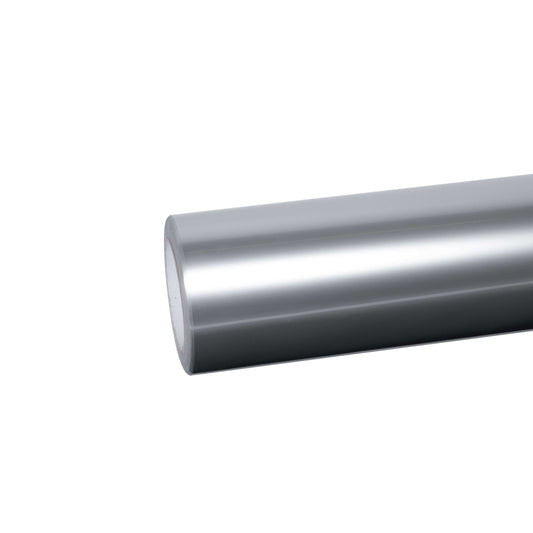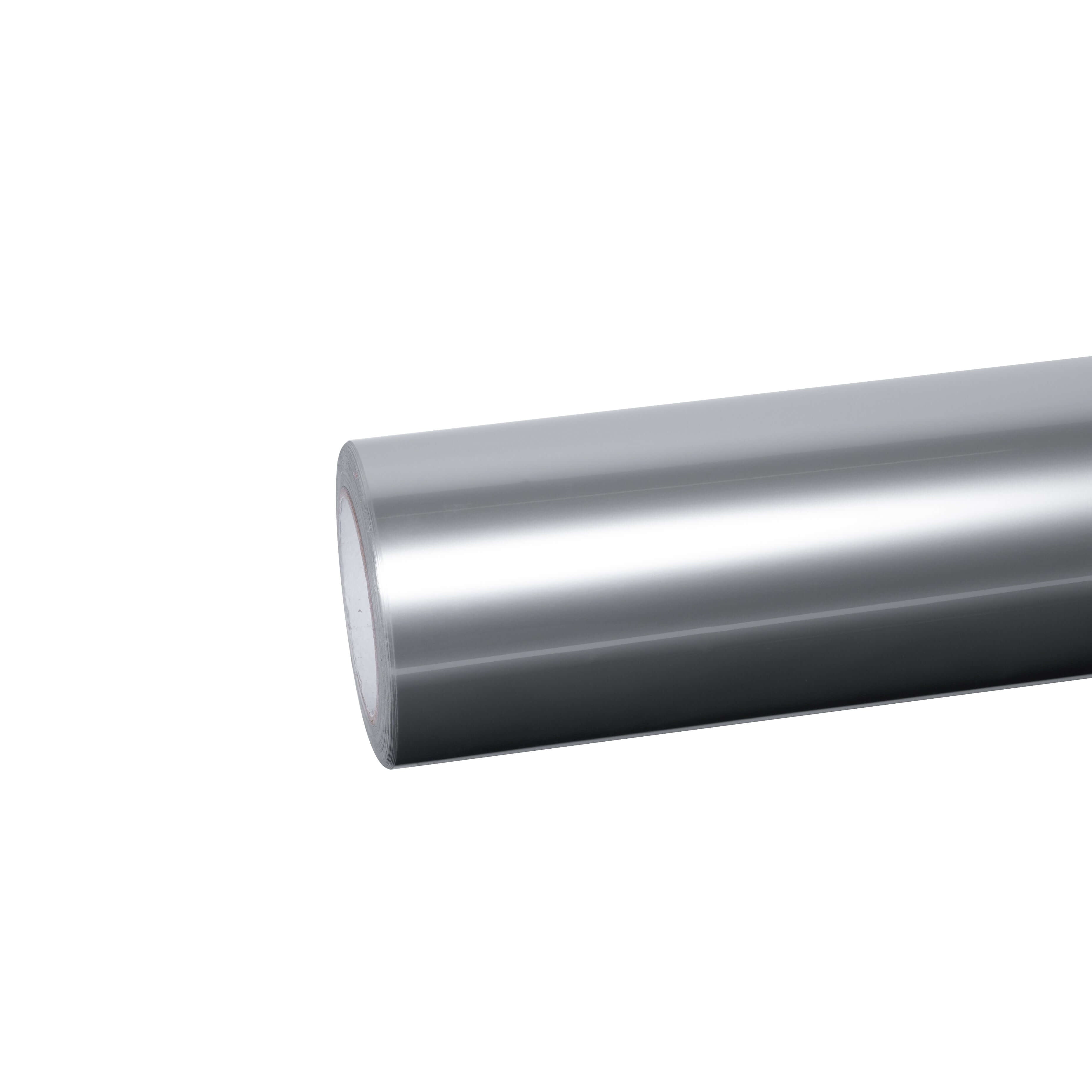Transform Your Vehicle Without Damaging the Paint
Whether you're ready to upgrade to a fresh metallic vinyl wrap, restore your vehicle's original paint, or replace a damaged wrap, knowing how to remove vinyl wrap safely is essential. This comprehensive guide walks you through the professional removal process, ensuring your car's paint remains protected while achieving clean, residue-free results.
When Should You Remove a Car Wrap?
Timing is everything when it comes to vinyl wrap removal. Remove your wrap too early, and you waste your investment. Wait too long, and removal becomes exponentially more difficult.
Signs It's Time to Remove Your Wrap
Visible Wear and Damage:
- Cracking, especially on horizontal surfaces (hood, roof, trunk)
- Significant fading or color change from UV exposure
- Peeling or lifting edges around doors, mirrors, and handles
- Bubbling or wrinkling that can't be repaired
- Discoloration or yellowing from sun exposure
Age-Related Factors: Most vinyl wraps, including TPU paint protection wraps and standard car vinyl wraps, have a lifespan of 5-7 years when properly maintained. However, environmental factors significantly impact longevity:
- Desert climates: Intense UV exposure may reduce lifespan to 3-4 years
- Coastal areas: Salt air and moisture can deteriorate wraps faster
- Cold climates: Extreme temperature fluctuations accelerate brittleness
- Garage-kept vehicles: Can extend wrap life to 7-10 years
Style Change: Ready for a new look? Perhaps you want to switch from your current liquid chrome wrap to a sophisticated ultra-matte wrap, or from dual-color dream vinyl to classic 3D carbon fiber.
Critical Warning: The longer you leave a damaged or aging wrap on your vehicle, the more difficult removal becomes. Vinyl becomes increasingly brittle over time, breaking into small pieces during removal rather than peeling off in large sections.
Understanding Vinyl Wrap Removal Difficulty
Not all wrap removals are equal. Several factors determine how challenging your removal process will be:
Age of the Wrap
Under 3 Years: Easiest removal period. Vinyl remains pliable, adhesive releases cleanly, minimal residue.
3-5 Years: Moderate difficulty. Some vinyl brittleness, increased adhesive residue, requires more heat application.
5-7 Years: Challenging removal. Vinyl may tear frequently, significant adhesive buildup, time-intensive process.
Over 7 Years: Extremely difficult. Vinyl breaks into tiny flakes, adhesive deeply bonded, may require professional removal with specialized equipment.
Quality of Original Materials
Premium wraps like those from Sailifilm's best sellers collection use superior adhesives designed for clean removal. Lower-quality wraps often leave excessive residue and tear more easily during removal.
Installation Quality
Professionally installed wraps with proper surface preparation remove more easily than DIY installations where adhesive may have bonded inconsistently.
Environmental Exposure
Sun-baked wraps, especially glitter sparkle car wraps or rainbow laser vinyl wraps exposed to intense UV, become more brittle and difficult to remove.
Essential Tools for Safe Wrap Removal
Gather these professional-grade tools before starting your removal project:
Required Equipment
Heat Gun (Most Critical Tool):
- Variable temperature control (recommended 200-250°F)
- Minimum 6-inch working distance
- Even heat distribution capability
- Alternative: Hair dryer on highest setting (slower but safer for beginners)
Plastic Scrapers and Razor Blades:
- Non-metallic plastic scrapers
- Plastic razor blades for lifting edges
- Squeegees for working under vinyl
- Never use: Metal blades, knives, or screwdrivers (will scratch paint)
Adhesive Removal Products:
- Automotive-grade adhesive remover (3M Citrus-Based Adhesive Remover or Rapid Tac)
- Isopropyl alcohol (70% concentration)
- Spray bottles for application
- Clean microfiber cloths (multiple)
Protective Equipment:
- Heat-resistant gloves
- Safety glasses
- Long sleeves for sun protection if working outdoors
Optional but Helpful:
- Infrared thermometer (monitor surface temperature 115-120°F)
- Extension cord for heat gun
- Work lights for detailed areas
- Painter's tape to mark progress sections
Explore our wrapping tools collection for professional-grade equipment that works for both installation and removal.
Preparing Your Workspace
Proper preparation makes the removal process 50% easier and prevents paint damage.
Ideal Working Environment
Temperature: 70-80°F (21-27°C) is optimal
- Too Cold (below 60°F): Vinyl becomes brittle and tears easily
- Too Hot (above 90°F): Adhesive becomes overly sticky
Location:
- Best: Climate-controlled garage
- Good: Covered carport or shaded area
- Acceptable: Outdoors in mild weather, early morning or late afternoon
- Avoid: Direct sunlight (makes adhesive too sticky) or freezing temperatures
Vehicle Preparation
Step 1: Thorough Cleaning Wash your vehicle completely before removal. Dirt and debris can scratch paint during the removal process. Use pH-neutral car wash soap and dry thoroughly.
Step 2: Surface Inspection Examine the entire wrap for lifting edges, tears, or damage. Identify the best starting points (typically around door edges, mirrors, or trunk seams).
Step 3: Test Removal Before committing to full removal, test a small 2x2 inch corner section:
- Heat the area
- Attempt to peel
- Assess vinyl condition and adhesive behavior
This test reveals:
- ✅ Clean peel: Proceed with confidence
- ⚠️ Slight tearing: Requires extra patience and heat
- ❌ Chips into tiny pieces: Consider professional removal services
Step-by-Step: Professional Wrap Removal Method
Follow this proven 6-step process for safe, efficient vinyl wrap removal.
Step 1: Heat the Starting Section (5-10 minutes per section)
Technique:
- Set heat gun to medium-low setting (200-220°F)
- Hold gun 6-8 inches from surface
- Move in constant back-and-forth motion
- Heat a 12x12 inch section until warm to touch (not hot)
- Test vinyl pliability before peeling
Temperature Guidelines:
- Too cool: Vinyl won't release from adhesive
- Perfect: Vinyl feels warm and slightly stretchy
- Too hot: Vinyl bubbles, burns, or releases fumes
Pro Tip: For colored paint protection films or crystal vinyl wraps, use lower heat settings to prevent surface damage.
Step 2: Find and Lift the Starting Edge (2-3 minutes)
Best Starting Points:
- Door edges (easiest access)
- Mirror bases
- Trunk or hood seams
- Previously lifted or damaged areas
Lifting Technique:
- Use plastic razor blade at shallow angle (nearly parallel to surface)
- Slide blade gently under edge
- Work blade back and forth to separate vinyl from adhesive
- Create a 1-2 inch lifting tab
- Use fingers to pull once you have adequate grip
Never: Force or pry aggressively. If edge won't lift, apply more heat.
Step 3: Peel at the Correct Angle (Critical for Success)
The 25-40 Degree Rule: This is the single most important technique for preventing paint damage.
Correct Peeling Angle:
- Pull vinyl back at 25-40 degrees from the surface
- Keep angle consistent throughout the pull
- Imagine peeling a banana—smooth, steady, controlled
Why This Matters:
- 90-degree pull (straight up): Maximum stress on paint, high risk of clear coat damage
- 25-40 degree pull: Minimal stress, clean release
- Too shallow (<15 degrees): Vinyl tears rather than releases
Peeling Speed:
- Slow and steady wins the race
- Approximately 1-2 inches per second
- If vinyl begins tearing, slow down and add more heat
Step 4: Continuous Heat Application (Throughout Removal)
Don't heat once and expect vinyl to stay pliable. Professional removal requires ongoing heat management:
Technique:
- Heat gun in one hand, vinyl in other
- Apply heat 3-6 inches ahead of where you're pulling
- Keep vinyl warm as you peel
- Reheat sections that cool down or become difficult to pull
- Work in manageable 12x18 inch sections
Panel-by-Panel Strategy: Start with vertical panels (doors, fenders) before tackling horizontal surfaces (hood, roof). Vertical panels are easier because they receive less direct sun exposure and typically have less adhesive degradation.
Step 5: Remove Complex Areas (Handles, Mirrors, Curves)
Door Handles and Trim:
- Apply extra heat to edges and contours
- Use plastic tools to work vinyl out of recessed areas
- Be extremely patient—rushing here causes the most tears
Mirrors:
- May need to remove mirror cover or entire mirror assembly
- Refer to your vehicle's service manual
- Work slowly around electrical connections
Contoured Surfaces:
- Bumpers, wheel arches, and body curves require more heat
- Pull at consistent angle while following surface contour
- Accept that some tearing may occur in tight curves
Step 6: Final Inspection and Section Completion
After removing each major panel:
- Inspect for remaining vinyl fragments
- Note areas with heavy adhesive residue
- Set removed vinyl pieces aside for disposal
- Plan your next section based on what you learned
Time Estimates:
- Sedan/Coupe: 4-8 hours
- SUV/Truck: 6-12 hours
- Full-size van: 10-16 hours
Pro Tip: Break the project into sections over multiple days rather than rushing through in one marathon session.
Removing Stubborn Adhesive Residue
Even with perfect removal technique, some adhesive residue is normal. Here's how to clean it effectively:
Adhesive Removal Process
Method 1: Automotive Adhesive Remover (Recommended)
- Spray adhesive remover directly on residue
- Let sit for 2-3 minutes to penetrate and soften
- Wipe away with microfiber cloth using circular motions
- Repeat if necessary for stubborn spots
- Wash area with car wash soap to remove remover residue
- Dry completely with clean microfiber towel
Method 2: Isopropyl Alcohol Solution
- Mix 70% isopropyl alcohol with water (3:1 ratio)
- Apply to adhesive with spray bottle or soaked cloth
- Let sit 1-2 minutes
- Wipe away with microfiber cloth
- Repeat application as needed
- Final wash with soap and water
Method 3: Heat Method (For Minimal Residue)
- Gently warm adhesive with heat gun on low setting
- Wipe away softened adhesive immediately with cloth
- Follow with alcohol or adhesive remover for any remaining residue
Dealing with Heavy Residue Buildup
For wraps left on 5+ years or sun-baked adhesive:
Technique:
- Apply generous amount of adhesive remover
- Cover with plastic wrap or contractor bag (traps moisture and heat)
- Let sit 15-20 minutes
- Remove plastic and wipe away softened adhesive
- May require 2-3 applications for complete removal
Rubber Wheel Method: A rubber eraser wheel attached to a drill can mechanically remove adhesive. However, this requires skill—improper use can mar paint. Test on inconspicuous area first.
Critical Mistakes to Avoid
Learn from common errors to prevent paint damage and unnecessary frustration:
1. Removing in Wrong Conditions
❌ Don't: Work in cold weather, direct sunlight, or rain ✅ Do: Wait for ideal temperature and lighting conditions
2. Insufficient Heat Application
❌ Don't: Try to peel cold vinyl or heat only once ✅ Do: Apply continuous, consistent heat throughout removal
3. Pulling at Wrong Angle
❌ Don't: Pull straight up (90 degrees) or yank aggressively ✅ Do: Maintain 25-40 degree angle with slow, steady pulls
4. Using Metal Tools
❌ Don't: Use metal scrapers, knives, or sharp objects ✅ Do: Only use plastic tools specifically designed for vinyl removal
5. Rushing the Process
❌ Don't: Try to complete entire vehicle in unrealistic timeframe ✅ Do: Work methodically, taking breaks when needed
6. Ignoring Test Sections
❌ Don't: Start full removal without testing technique ✅ Do: Always test small area first to assess difficulty
7. Over-Heating Vinyl
❌ Don't: Hold heat gun in one spot or use excessive temperature ✅ Do: Keep gun moving, use infrared thermometer to monitor
8. Skipping Final Cleaning
❌ Don't: Leave adhesive residue on paint ✅ Do: Thoroughly clean and inspect every panel after removal
Will Wrap Removal Damage My Paint?
This is the most common concern, and the answer is: it depends.
When Removal is Safe
Good Conditions:
- Factory paint in good condition
- Professional installation on clean surface
- Wrap age under 5 years
- Proper removal technique used
- Quality vinyl wrap materials (like Sailifilm products)
Result: Clean removal with no paint damage
When Damage May Occur
Risk Factors:
- Paint was damaged, repaired, or weak before wrapping
- Primer or clear coat failure existed prior to installation
- Vehicle has rust underneath wrap
- Improper removal technique (pulling at 90 degrees, excessive force)
- Vinyl left on 7+ years beyond recommended lifespan
Potential Issues:
- Paint may lift with adhesive (pre-existing bonding failure)
- Clear coat dulling or hazing
- Minor surface scratches from improper tool use
Important Note: According to automotive experts, quality vinyl wraps installed on healthy paint actually protect the original finish, and removal should restore the vehicle to its pre-wrap condition.
Professional Removal vs. DIY: Making the Decision
DIY Removal Makes Sense When:
✅ Wrap is 3 years old or newer ✅ Vinyl peels easily in test section ✅ You have proper tools and workspace ✅ You have 8-16 hours available ✅ You're patient and detail-oriented ✅ Wrap is on simple, flat body panels
Cost Savings: DIY saves $300-$800 in labor
Professional Removal is Worth It When:
✅ Wrap is 5+ years old or severely sun-damaged ✅ Vinyl chips into tiny pieces during test removal ✅ You lack proper tools or workspace ✅ You need quick turnaround ✅ Vehicle has complex body contours ✅ You want to avoid any risk of paint damage
Cost Range: $500-$1,500 depending on vehicle size and wrap condition
After Removal: Preparing for Your Next Wrap
Once your old wrap is completely removed and adhesive cleaned, your vehicle is ready for transformation:
Surface Inspection and Preparation
Check for:
- Paint chips or scratches revealed after removal
- Clear coat condition
- Panel alignment issues
- Areas needing touch-up before new wrap
Options After Removal
1. Restore Original Paint:
- Wash and polish to restore shine
- Apply paint sealant or ceramic coating
- Enjoy your vehicle's original appearance
2. Install New Wrap: Browse Sailifilm's complete collection for your next transformation:
- Metallic Vinyl Wraps for a premium finish
- Liquid Chrome Wraps for maximum impact
- Ultra-Matte Wraps for sophisticated style
- Crystal Vinyl Wraps for unique shimmer effects
- Color-specific options: Choose from white, black, silver, grey, brown, orange, yellow, pink, green, blue, red, or purple wraps
3. Apply Paint Protection: Consider upgrading to TPU paint protection wrap for superior durability and self-healing properties.
Timing for New Installation
Wait Period: 24-48 hours after complete removal and cleaning
- Allows adhesive residue solvents to fully evaporate
- Gives you time to address any revealed paint issues
- Ensures surface is completely clean and dry
Not sure which wrap to choose? Order sample kits to see colors and finishes in person before committing to a full installation.
Frequently Asked Questions
Q: Can I reuse vinyl wrap after removal? A: No. Once vinyl wrap is removed, the adhesive is compromised and cannot be reapplied. The stretching during removal also permanently alters the vinyl's properties.
Q: How long does wrap removal take? A: DIY removal typically takes 6-12 hours for average vehicles, spread over 2-3 days. Professional shops complete removal in 2-4 hours using specialized equipment.
Q: What if I can't remove all the adhesive? A: Stubborn adhesive may require multiple applications of adhesive remover or professional intervention. Never leave adhesive on paint long-term—it will attract dirt and can cause discoloration.
Q: Will wrap removal void my vehicle warranty? A: No. Vinyl wrap removal does not affect manufacturer warranties. In fact, wraps often protect factory paint, helping maintain warranty coverage.
Q: Can I remove wrap from plastic bumpers and trim? A: Yes, but be extra cautious with heat application. Plastic can warp at lower temperatures than metal panels. Use lower heat settings and test carefully.
Q: What should I do if paint comes off with vinyl? A: Stop immediately. This indicates pre-existing paint adhesion issues. Document the damage and consult a professional body shop about paint repairs before proceeding.
Conclusion: Master the Removal Process
Removing a vinyl wrap safely requires the right combination of tools, technique, patience, and environmental conditions. By following this professional guide, you can successfully remove your old wrap without damaging your vehicle's paint, whether you're restoring the original finish or preparing for an exciting new transformation.
Remember the key principles:
- Test before committing to full removal
- Maintain ideal temperature and working conditions
- Use continuous heat application
- Pull at 25-40 degree angle consistently
- Work slowly and methodically
- Clean adhesive residue thoroughly
- Know when to call professionals
Ready to transform your vehicle with a stunning new wrap? Explore Sailifilm's extensive collection of premium vinyl wraps and professional installation tools. From classic finishes to cutting-edge color-shifting effects, we offer the highest quality materials for your next automotive transformation.
Have questions about removal or choosing your next wrap? Our team at Sailifilm is here to help you achieve the perfect look for your vehicle.
Additional Resources
Learn More About Vinyl Wraps:
- Wikipedia: Vehicle Vinyl Wrap - Comprehensive overview of vinyl wrap technology
- Automotive Care Guide - Professional maintenance advice
- Vinyl Wrap Installation Guide
-
Complete Vinyl Wrap Cleaning & Maintenance Guide - Keep your new wrap looking perfect
How to Choose the Right Vinyl Wrap for Your Vehicle
Professional Installation vs. DIY: What You Need to Know


